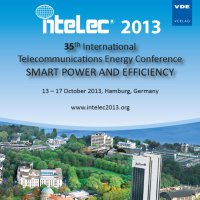Assessment of disturbance level caused by high power electronic converters and comparison with BPL emissions
Conference: Intelec 2013 - 35th International Telecommunications Energy Conference, SMART POWER AND EFFICIENCY
10/13/2013 - 10/17/2013 at Hamburg, Deutschland
Proceedings: Intelec 2013
Pages: 6Language: englishTyp: PDF
Personal VDE Members are entitled to a 10% discount on this title
Authors:
Küllmer, Alexander; Schüür, Jens; Hermanns, Kevin; Enders, Achim (TU Braunschweig, Institute for Electromagnetic Compatiblity, Braunschweig, Germany)
Abstract:
A higher efficiency in energy generation, transmission and distribution is needed due to the changes planned in Germany. Rapidly increasing amount of unsteady renewable energy produced by sources like sun, wind or water power and no longer conventional power plants cause the necessity of power electronic converters and to transport vast amounts of energy through the grid. For example the energy produced by offshore wind farms is first transported by a HVDC connection to the north shore of Germany and has afterwards to be transported to the south, where this energy is needed. As conventional transformer based power supplies are more and more replaced by higher efficient switching power supplies as well as more and more power converters are used in energy generation, the amount of energy that has at least been transformed once by a power converter increases. The switching events of the power electronic devices within those power converters generate new spectra in the higher frequency range and are determined by the amplitude that is turned on and off, the dU/dt rate according to the switching time of a semiconductor, the switching frequency and the used pulse pattern of the power converter itself. The connection to the grid of the converter transfers parts of the generated spectra to the grid. A short discussion of several elements with smoothing and filter characteristics within the grid will be performed. The dimension of the substations and especially the lengths of the grid cables are comparable to the wavelengths of the higher frequency components of the converters’ spectra. Thus new EMC problems of radiated disturbances on wireless broadcast services could result. Since such problems are also known in another framework using broadband powerline communication (BPL), this paper compares disturbances induced by power converters with BPL techniques, too. Finally a measurement setup for contactless acquisition of such disturbances will be proposed. First results of measurements on power converters with connected high voltage transmission lines will be given. These will be compared to results achieved by performing measurements on standard power line communication modems in a test harness.


